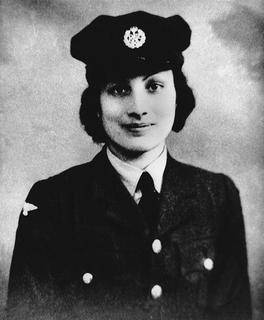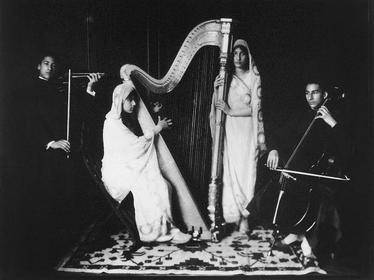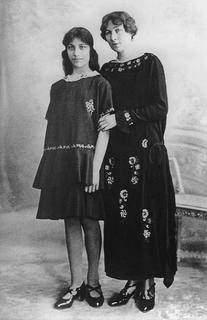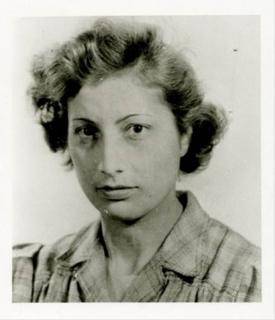Bringing Noor back to Gordon Square
A guest blog by Shrabani Basu

Following the publication of my book Spy Princess, The Life of Noor Inayat Khan, I had received a large number of letters thanking me for reviving Noor's story. Many wrote about how important Noor's story was for contemporary Britain and how there should be a permanent memorial for her. She was a young Muslim woman who had given her life for her adopted country. Why had her story been forgotten? She was an inspiration for young Asians, an important example of the contribution made by Asians to Britain. I thought then that a blue plaque outside her house would be a good idea. I sent off a letter to English Heritage.

Over six months later I received the disappointing news that the application had been rejected. The reasons were not entirely clear. It was something to do with the fact that Noor did not 'really live there', as she was mainly in training around the country. The house in Taviton Street was her mother's house. Yet it was to this house that Noor returned to when she had her days off. It was the Taviton Street address that she scratched out on a bowl to her fellow prisoners in Pforzheim Prison in Germany, when they tried to exchange addresses. And it was to this address that the French prisoner, Yolande Lagrave, come looking for Noor after the war. This led to the discovery that Noor had been a prisoner in Germany and been taken from there to Dachau Concentration camp in the autumn of 1944 where she was tortured and killed.
Needless to say I was very disappointed at this decision by English Heritage. Even a fictional character like Ziggy Stardust has a blue plaque in London, but it was not going to happen for Noor. I watched as her SOE colleague, Tim Yeo, received a plaque outside his house. Her fellow agents, Violette Szabo and Odette Hallowes (both George Cross awardees) already had blue plaques. In 2009, a bust of Violette Szabo, was unveiled on South Bank. I felt increasingly that Noor was being forgotten.
After the 2010 elections, five Asian women took their seats in the House of Commons for the first time. I thought I could appeal to them to do something about Noor. I invited them for tea along with a group of eminent Asian women like Gurinder Chadha and Shami Chakrabati and told them about Noor. Soon we had a petition signed by 30 women. Labour MP Valerie Vaz said she would table an Early Day Motion in the House of Commons. The ball had started rolling.
I wanted the memorial in Gordon Square, a garden that I always associated with Noor. As a child, Noor had lived with her parents at 29 Gordon Square. Her father, Hazrat Inayat Khan, a Sufi mystic and musician, had often meditated under a cherry tree in Gordon Square. Noor had played in this park with her siblings and she had seen fairies in the Square as a child. Her world of fairies and magical creatures would always stay with her. She became a children's writer in Paris writing for Le Figaro and other newspapers and published her first book Twenty Jataka Tales in 1939.

In 1940 as the Germans entered Paris, Noor left for London determined to do her bit for the war effort. After volunteering for the Women's Auxiliary Air Force (WAAF) in 1940 where she was trained as a radio operator, she was recruited by the SOE in 1942. Her knowledge of French, her familiarity with Paris and her skills as a radio operator were needed for the clandestine operations planned by London HQ. Her mother had moved to Taviton Street by then. Noor would visit her when she had time off and spend some quiet moments on a park bench reading a book. It was from the house in Taviton Street that she left on her last mission.

Gordon Square is owned by the University of London and Valerie Vaz said she would write to Sir Graeme Davis, Vice Chancellor. The permission came through in September 2010. Within two months I set up the Noor Inayat Khan Memorial Trust and chose my team: like-minded women who were ready to give their time for the campaign. All of us felt passionately about the importance of preserving our history and ensuring that those who had made an important contribution to British life and society were not forgotten.
We commissioned Karen Newman, who had sculpted the bust of Violette Szabo on the South Bank, to do Noor. On Remembrance Day 2010, I kicked off the fund-raising drive with a talk on Noor in Trinity College, Cambridge. By January 2011 we received charity status. Over the year we organised a series of fund-raisers: films, concerts, gala dinners, talks. Anoushka Shankar performed for us at a concert in the House of Commons, Madan Gopal Singh, a Sufi singer from India, gave a concert for us in Rudolf Steiner House and Felicia Norton travelled from New York to perform her solo dance composition called Noor, based on the life of Noor. Women film makers from India, Kiran Rao and Anusha Rizvi, gave us their films to screen for charity events. The momentum was gathering. Ordinary members of the public sent us cheques with encouraging letters of support.
All of 2011 I travelled around UK - from Manchester to Beaulieu, giving talks about Noor. The slightly battered poster of Noor, the black cardboard money box and the gift-aid forms became a part of our lives. There were moments of elation when HRH The Princess Royal agreed to unveil the bust or when we received a generous cheque and moments of utter desolation as the planning permission got delayed. On 18 October, three weeks before the scheduled unveiling, we sat in the Council Chamber at Camden Town Hall awaiting our verdict. The fate of the Noor memorial was held in balance again. But Camden had received over 700 letters and petitions from all over the world in just three weeks. The councillors agreed unanimously in favour of the bust. It seemed, we were finally going to get there. Noor would return to Gordon Square and her story would be preserved for the next generation.
------------------
Shrabani Basu is Chair of the Noor Inayat Khan Memorial Trust and author of Spy Princess, The Life of Noor Inayat Khan. The unveiling of the memorial occurs on 8 November 2012. For more information, visit www.shrabanibasu.co.uk
 Close
Close


